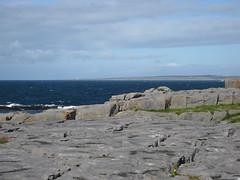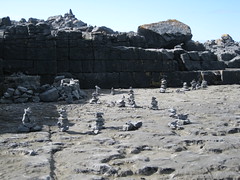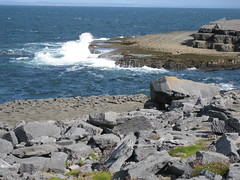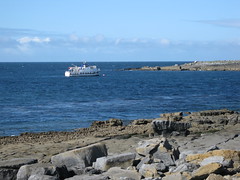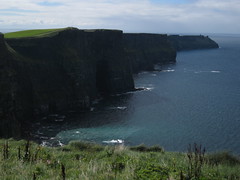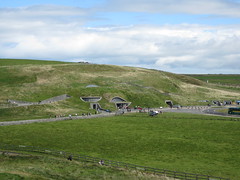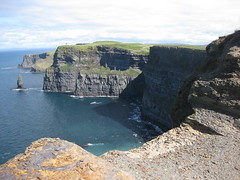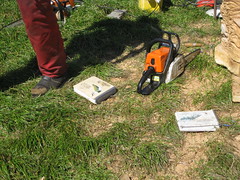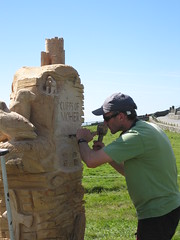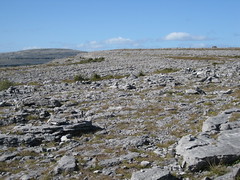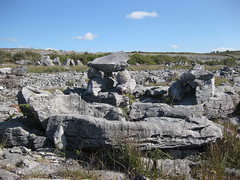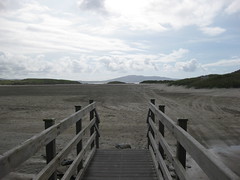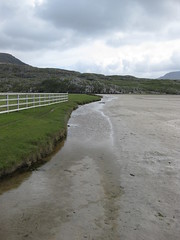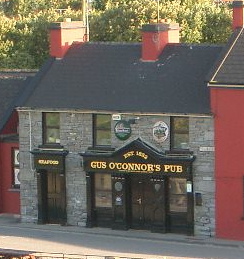From Doolin’s harbour side you can see the ferries that ply back and forth to the Aran Islands. The rock is limestone, like the Burren, and the land beneath cut through with caves including the world’s largest stalactite and the submerged ‘Green Holes’, only discovered in the 1980s.
While the Aran Islands stretch across the sea to the North West, to the South West rise the Cliffs of Moher, 200 metres from the sea, shortlisted alongside Kilimanjaro, the Great Barrier Reef and the Grand Canyon to be one of the new seven wonders of nature. There is no beach, no sand or shingle, just sea and shear rock, but surfers travel there to ride the 35 foot wave at its feet.
The Moher visitor centre is dug and buried into the hillside with curved windows cut through the turf; Hobbit Town meets HiTech, The paved, stepped, and wheelchair-access routed area with its viewing points and wall of wave-patterned Burran limestone slabs, ends at widely ignored signs threatening danger to life and limb if one proceeds. You can see why the signs are there; it is not so much the lack of fence or wall between the cliff top path and precipitous edge, but the rock itself. The limestone of the Burran, Doolin coast and Aran Isles has ended and this is younger, softer alluvial rock, at the cliff top often little more than flakes of shale in hardened mud. The tourists peeking over the edge may be secure in footing, but the soft cliff edge itself might shrug them off to fly for a moment amongst the nesting gulls before hitting the water 600 feet below.
And out on the grass beside the forbidden cliff path, an Italian couple set up a video camera looking out towards the rocky headland, and sit in front of it to exchange rings.
Back at the visitor centre a sculptor was hard at work with chisel, angle grinder and chain saw, capturing the spirit of Maher from surfer to sea birds. Shane Gilmore‘s sculptures are found across Western Ireland, and he was commissioned to make this one in situ during the Clare Heritage Week. At Shane’s feet lay a collection of reference books; he explained that if he got some detail wrong, gave a bird the head of a gull and the body of a gannet, someone would be sure to notice.
It is only a short way from Doolin and Maher, and slightly longer of you cut back north to travel across the Burren, but worth it, for its near lunar yet surprisingly fertile landscape. Few roads cut across the limestone countryside but far beneath the ground are subterranean rivers and networks of caves left from past water courses, treacherous as they too can flood rapidly when rain falls and drains through sinkholes and caverns.
At a distance the Burren landscape appears barren, but between the clints, giant paving slabs of grey stone, the cracks, or grykes, are rich with wild flowers and lush grasses that supported communities from Neolithic times, who in turn left their traces in fire circles and ring forts. And near every parking place, each clint is topped with a tiny cairn or sculpture as visitors today still want to leave some trace of their being here, or maybe token of their hoped-for return.

